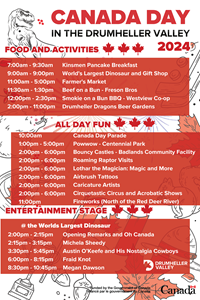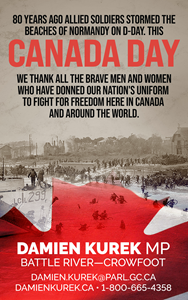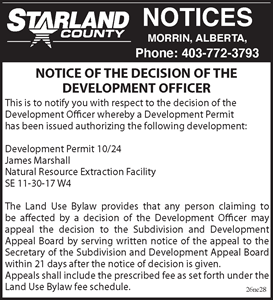
Over the years, Reg Bennett has worked meticulously to document hundreds of soldiers who died in action, including his namesake. In fact, that is what got him started.
Between 1999 and 2016, he compiled a volume of biographical information of soldiers who appear on the honour roll in Drumheller. In fact, he was able to research and find four more soldiers from the Drumheller area who were added to the Drumheller Cenotaph in 2012.
He has gone on to do research for other communities and has compiled 40 books, including one that was presented to the County of Strathcona at the Lord Strathcona’s Horse’s Centennial.
It all started when researching who he thought was his namesake.
It was in 1999, he was a Navy League cadet officer. He sat down in front of a computer hooked up to the Internet.
“It took me two hours to find information on my great uncle,” said Bennett. “The reason it took me two hours is that no one had ever told me his name was George. As I grew up, I was always one of the Reg’s.”
He knew his great uncle George Reginald Bennett and his brother Percy Guy Bennett fought in World War I. One came home, and in honour of his deceased great uncle, two of his brothers, including Reg’s grandfather gave him the same name. It has continued to be passed down the generations.
One of the reasons he wanted to do the research was because there were very few family stories.
He learned George Reginald signed up first, but he was held back because he was the eldest child, and it was important for the effort to keep the farming industry viable. Percy then signed up and was sent overseas. He was grazed on his head in battle.
“He was incapacitated. He couldn’t go back home because he wasn’t wounded enough so they kept him over there as a stretcher bearer,” said Bennett.
His older brother Reginald then entered the war and they both fought at Vimy Ridge. Reginald was a private and was on the front line. Percy continued as a stretcher bearer. They also both ended up in the Battle of Hill 70 four months later.
“They did not even know each other was close by. There were so many different battalions,” he said. “The battle began on the 15th of August, 1917, Reginald was wounded and they transported him 138 kilometres to the 3rd General Hospital at Le Trepot, France.”
Reginald’s brother Percy received word sometime between August 15 and August 30 that he was wounded. When learned his brother was wounded, and he could not leave the front anyway as the battle raged until August 25.
All of this information Reg learned from his research.
“When his brother came back from the War, all he could say was he walked 30 miles to a POW camp, and when he arrived his brother had already died of gunshot wounds,” explains Reg. “All my life this was the story.”
What Reg learned was that it was not a POW camp, but a hospital.
In fact, had it been a POW camp, he would have been captured.
“When I found the record, he did arrive a day after Reginald died. It was a hospital and not a POW camp, and it wasn’t a gunshot wound. It was a shell shot wound, it must have been a fragment of shell,” he explains. “77 years later I discovered all of this information.”
When he undertook this initiative to find information on his great uncle it was just after Remembrance Day. He had the program from the Drumheller ceremony and he started punching names in.
“After I did the Drumheller Legion, I did East Coulee and started expanding. By the time I finished in 2016, I had about 40 community binders,” he said.
He has compiled a database of over 2,000 service men and women. He has also photographed graves for the Commonwealth War Grave Commission.
There are about 1,050 servicemen and women buried in Alberta who have died in wartime.




























